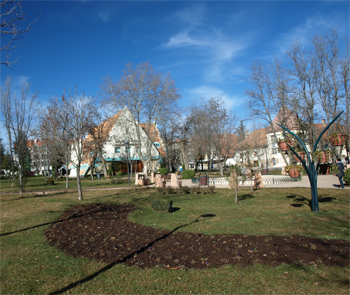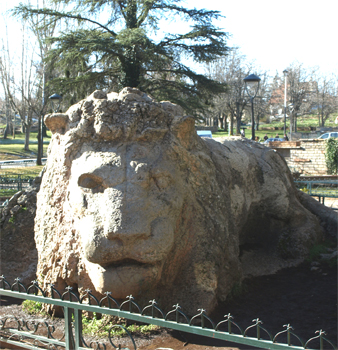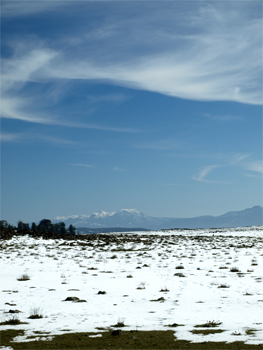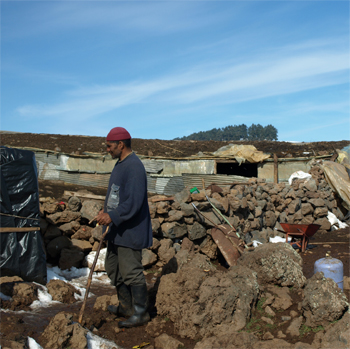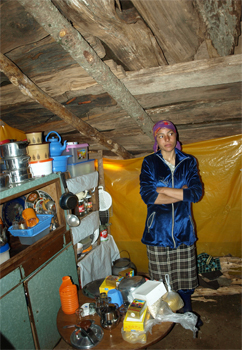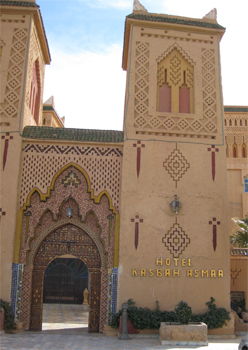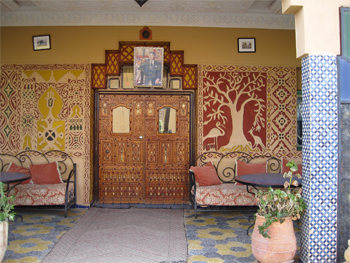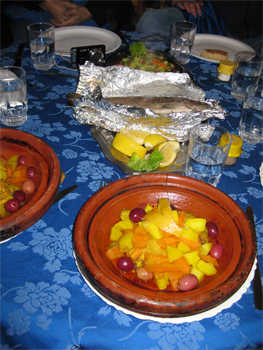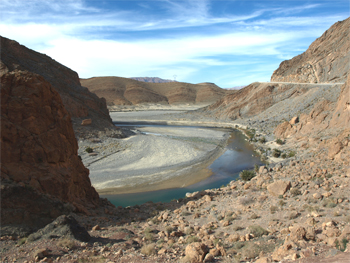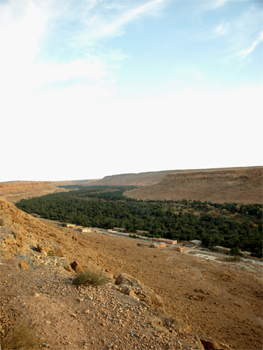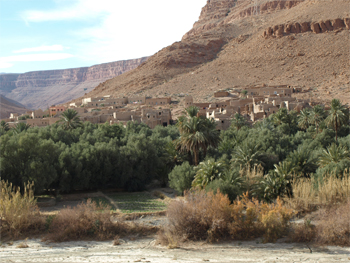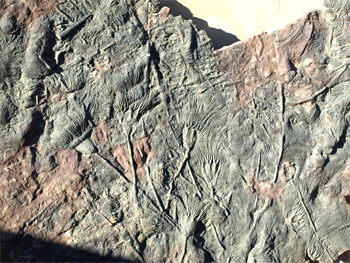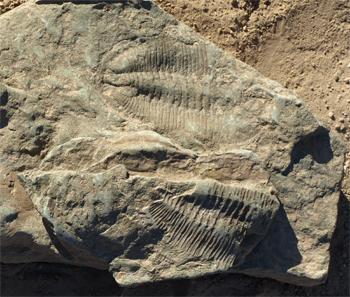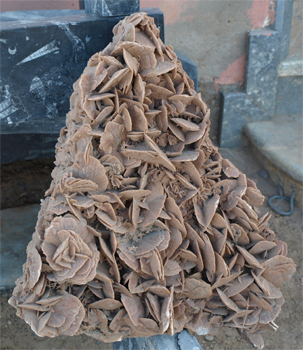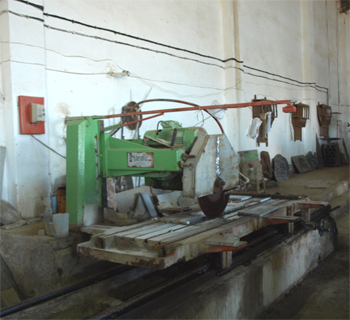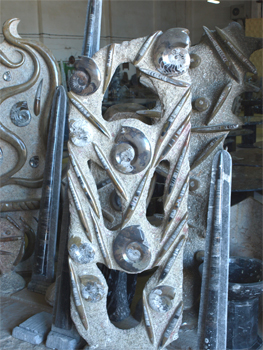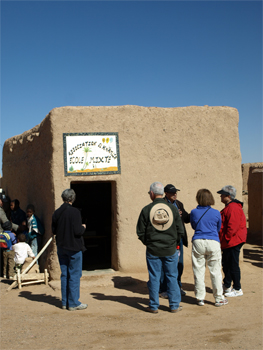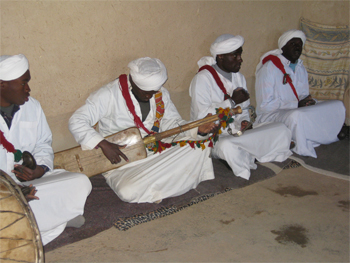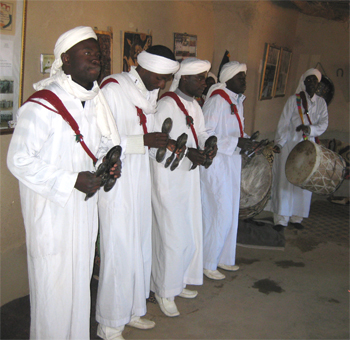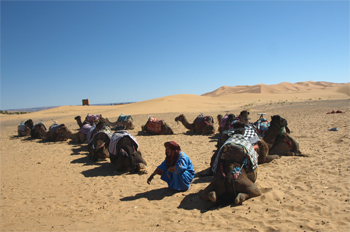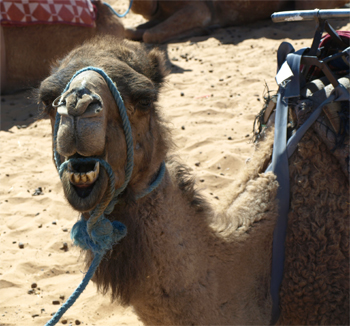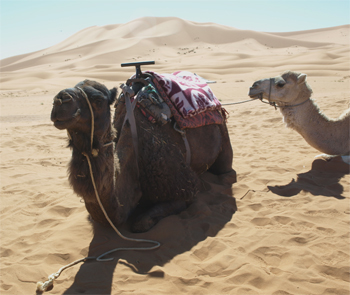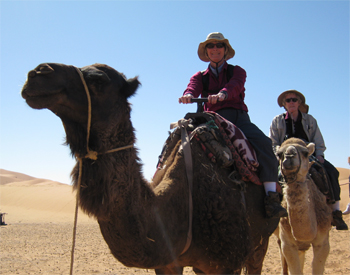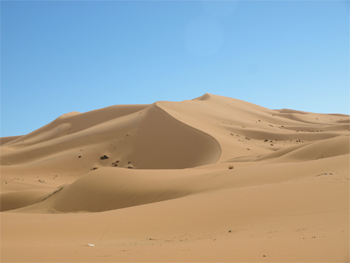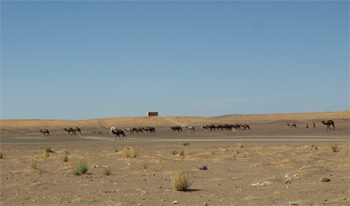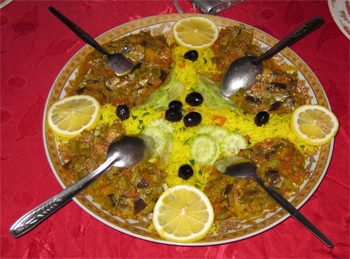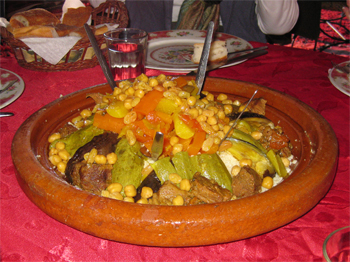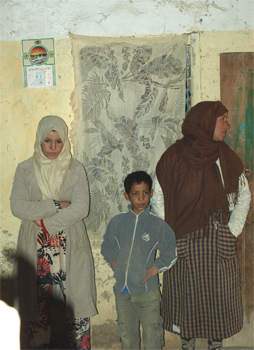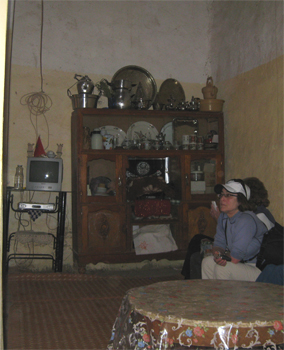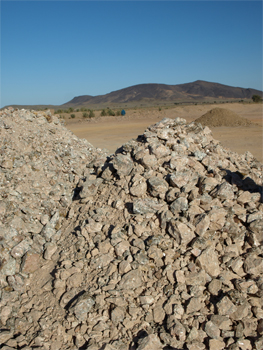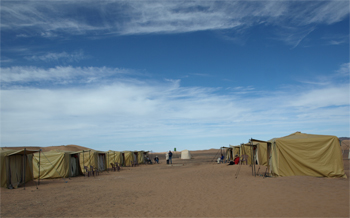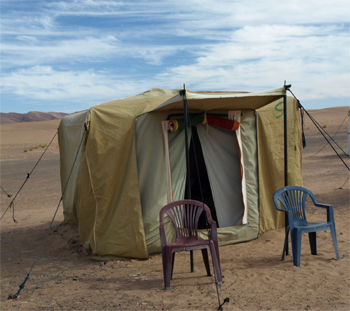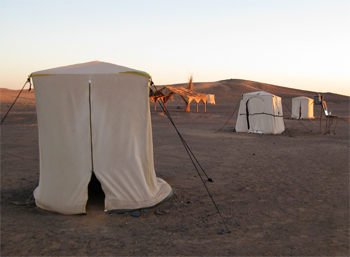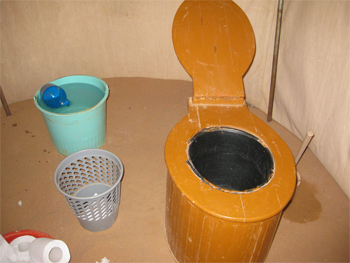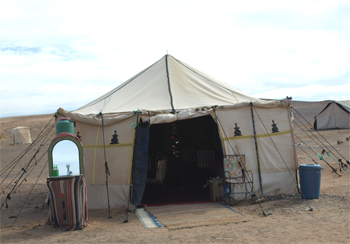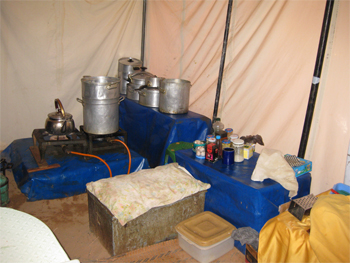We left Fes behind and entered the Middle Atlas Mountains. The land became very rocky with volcanic rock. The area is referred to as the "water tower" because it provides water for Fes and Meknes.
We drove into heavy frost and then some standing snow on our way to the ski town of Ifrane, a "city of caves." The town was built by the rich French Moroccans and includes the only Moroccan private university (Al Akhawayn) and a royal palace because the king likes it here. We walked around the town and took pictures of the lion and the chalet like houses.
We arrived at Erfoud and our next hotel. Dinner was a kind of meat loaf with carrots, potatoes, and zucchini; bread, vegetable puree soup, and oranges, and bananas for dessert.
Wed., 2/9/11 - Erfoud to the Saharan Tent Camp
This morning we visited the Erfoud fossil factory. Some of the fossils from here are 380 million years old and are buried 15 meters deep. This area was once an inland sea before the continental separation. The fossils include nautilus snails, squid relatives, trilobites, and desert rose (gypsum). The large machinery, made in Italy, included a cutter that slices slabs 1/2 inch per hour at any thickness they want, a diamond cutter and a high powered polisher. The resulting pieces are hand ground or a solution is put on them so the fossils stand out the stone around it is dissolved. They had many beautiful large and small pieces in their shop.
Fossils |
Trilobite fossils
|
Desert Rose (gypsum) |
Worker grinding rock to expose fossils
|
Rock cutter |
One of the beautiful pieces produced from the fossils
|
We headed out toward the Sahara in 4x4 Toyota jeeps and made several stops to learn about the people of this part of Morocco. The first stop was at Pigeon du Sable, a village of dark skinned Sudanese. This village was once a caravansary for traders of salt from the north and for gold from the south.
Pigeon du Sable village |
School
|
We entered an adobe structure and listened to a Sudanese music and dance performance. The instruments were drums, one guitar-like thing and Sudanese castanets. It was a lot of chanting and repetitive sounds and steps.
|
Sudanese musicians
|
Sudanese musicians |
Sudanese musicians
|
We rode camels to lunch in a tent in the desert. The camel ride (for 45 minutes) was fun and appropriate to the scenery of sand dunes. Only male camels five years and older are ridden; females are used for breeding. Wool is gathered from camels in their first 5 years and after that, it is called hair and is coarser.
Waiting for the tourists |
You don't say!
|
Gale's camel
|
Here we are aboard our "ships of the desert" |
View from the back of the camel
|
Tourist tent camp |
The Sahara at last |
Dung beetle in the sand
|
Herd of camels |
Just like our elk! - King of the Road
|
We had lunch at a tent camp and it was another typical Moroccan meal cooked in a tagine.
Couscous and ratatouille starters |
Tagine
|
At Rissani we visited a poor woman's house. OAT is giving her money to keep her 15-year old daughter in school instead of sending her off to Casablanca or Rabat to be someone's maid. She rides a free bicycle to school and wants to go to Meknes to a university to become a teacher. The house has a living area, two small rooms and a tiny kitchen in an attached shed. They rent it for $8 a month.
|
|
We drove through rocky soil and sand with almost no vegetation. There are quarries around here that bring rocks to a spot where they are piled and then trucked out to be ground into powder and made into glass and electronic pieces. There was silica, quartz, feldspar and crystals in the rocks we looked at.
|
Quarried rock
|
We finally made it to our tent camp in the desert – Daya el Maider. There are two rows of ten 2-cot tents with Berber rugs on the floor and one solar fed electric bulb and one nightstand. Each cot has 3 of the heaviest blankets I can remember ever being weighted down with - but they are warm! There are 5 pit toilet tents behind each row of sleeping tents and four shower tents with a hose hanging from the top. If you want a shower, the camp staff will heat some water and pour it into the bucket on top. It was too cold for any of us to even think about taking a shower.
Our camp
|
"Main street" |
Drifting sand can be a problem
|
Shower tents |
Our "room" |
Interior |
Outhouses |
All the comforts of home
|
Washbasin
|
The meeting and dining tent is large, has tables and chairs so we don't have to sit on the floor for meals and is sort of inviting. The kitchen tent was small with three propane hot plates. It is amazing the wonderful meals they prepared in these bare amenities. It is a simple camp but rather appropriate. Before dinner we had "high tea" with cookies, almonds, and peanuts and a cooking class where the camp chef prepared a tagine for us. We had the same recipe for dinner with the wine we bought in Fes. After the bouncy ride over unpaved and rutted sand roads, we were ready to enjoy a glass of wine and a hot meal.
|
Dining/meeting tent |
Another wonderful Moroccan meal
|
Kitchen tent
|
Kitchen |
